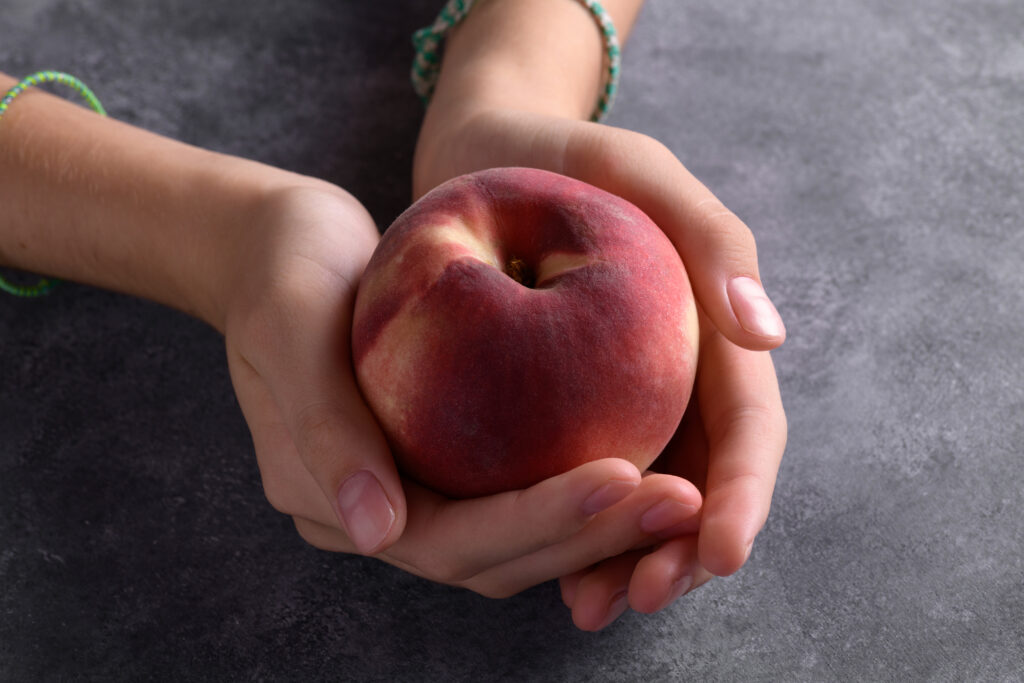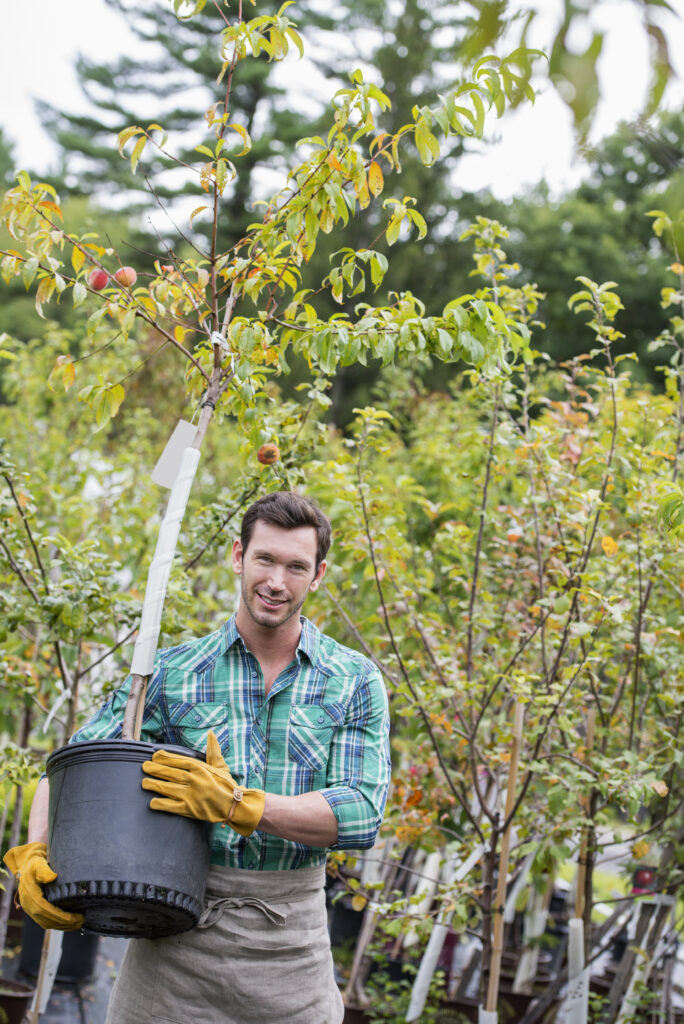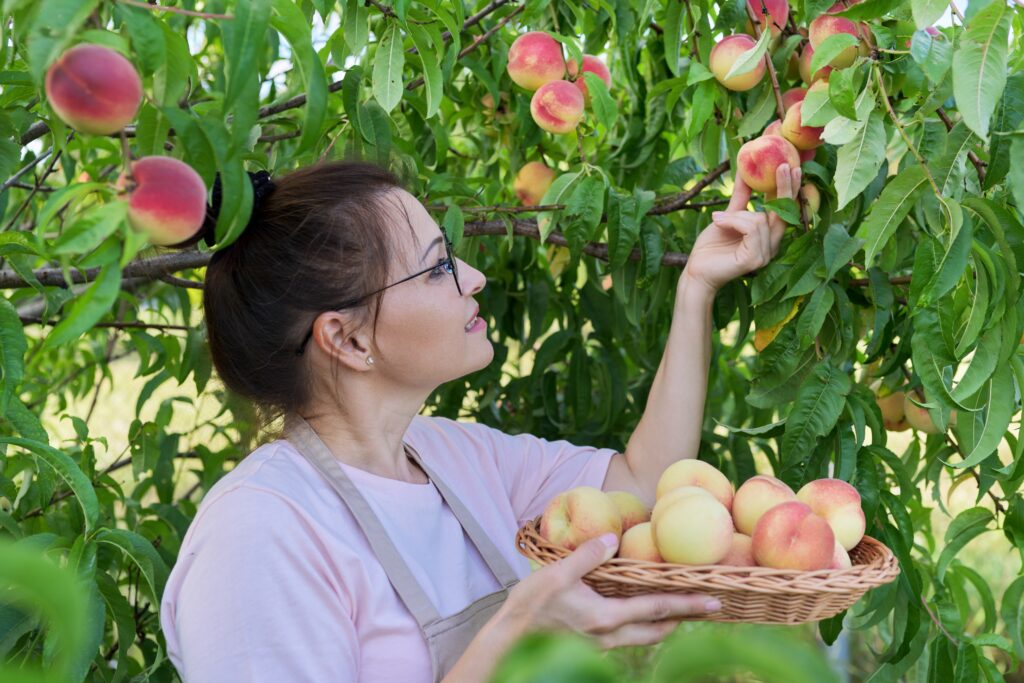
Introduction
Peaches are a delightful and nutritious addition to any home garden. With their sweet, juicy flavor, they are perfect for fresh eating, baking, and preserving. Growing peaches may seem challenging, but with proper care, you can enjoy a bountiful harvest right from your garden. This guide will provide you with everything you need to know to grow peaches successfully, from selecting the right variety to harvesting your fruit.
Choosing the Right Peach Variety
The first step in growing peaches is selecting a variety that suits your climate. Here are some popular peach varieties and their characteristics:
- Freestone Peaches: The flesh easily separates from the pit, making them great for fresh eating. Varieties like Elberta and Redhaven grow well in USDA zones 5-8.
- Clingstone Peaches: The flesh clings to the pit, which is ideal for canning and preserving. Varieties like Santa Barbara and June Gold thrive in zones 5-9.
- Dwarf Varieties: If you have limited space, consider dwarf peach varieties like Bonanza and Pix Zee, which grow well in containers or small gardens.
Peach trees require chilling hours (hours below 7°C) to set fruit. Make sure to choose a variety that matches the winter conditions in your region.
When to Plant Peach Trees

The best time to plant peach trees is in early spring or late fall when the tree is dormant. Planting during this period gives the tree time to establish its roots before the growing season begins.
In colder climates, it’s best to plant in early spring to avoid frost damage. In warmer regions, planting in late fall allows the tree to develop before the heat of summer arrives.
Selecting the Best Location
Peach trees need a location with plenty of sunlight and well-drained soil to thrive. Here are some important factors to consider:
- Sunlight: Peach trees need 6-8 hours of direct sunlight daily. Choose a spot that gets full sun for optimal growth and fruit production.
- Soil: Well-drained, sandy loam soil with a pH between 6.0 and 7.0 is ideal for peaches. You can amend your soil with compost to improve drainage and nutrient content.
- Air Circulation: Good airflow is essential to prevent fungal diseases. Avoid low-lying areas where cold air can settle and increase the risk of frost damage.
Planting Peach Trees
Once you have selected the right variety and location, it’s time to plant your peach tree. Follow these steps:
- Dig the Planting Hole: Dig a hole that is twice as wide as the root ball and just deep enough to cover the roots without burying the trunk.
- Space Trees Properly: Standard peach trees should be spaced about 15-20 feet apart, while dwarf varieties can be spaced 8-10 feet apart.
- Position the Tree: Place the tree in the hole so that the graft union (the bump where the tree was grafted onto rootstock) is a few inches above the soil level.
- Backfill and Water: Fill the hole with the removed soil, firm it gently around the roots, and water thoroughly to eliminate air pockets.
Watering Peach Trees

Peach trees need regular watering, especially during the first few years as they establish their roots. Here are some tips:
- Water Deeply: Water newly planted peach trees about 1 inch per week. Deep watering encourages the roots to grow deeper into the soil.
- Mulch: Mulch around the base of the tree with organic materials like wood chips or straw to retain moisture and suppress weeds. Keep the mulch a few inches away from the trunk to prevent rot.
- Avoid Overwatering: Peach trees do not like soggy soil, so make sure the area has good drainage to avoid root rot.
Fertilizing Peach Trees
Peach trees benefit from regular fertilization to support growth and fruit production. Here’s how to fertilize your peach tree:
- Balanced Fertilizer: Apply a balanced, organic fertilizer in early spring when the growing season begins. Choose one with a higher nitrogen content to encourage strong growth.
- Feed Annually: Apply fertilizer once a year in the early spring. Over-fertilizing can lead to excessive leaf growth at the expense of fruit, so follow the instructions carefully.
Pruning Peach Trees
Pruning is essential for maintaining the health and shape of your peach tree, as well as ensuring good fruit production. Here’s how to prune peach trees:
- When to Prune: Prune peach trees in late winter or early spring before new growth appears. Avoid pruning in the fall to reduce the risk of frost damage.
- Remove Dead or Damaged Wood: Start by removing any dead, damaged, or diseased branches to improve the overall health of the tree.
- Thin Out the Canopy: Peach trees need good airflow and sunlight to reach all parts of the tree. Thin out crowded branches to create an open, vase-like shape, which promotes healthy fruit development.
Thinning Peaches
Peach trees tend to produce more fruit than they can support, leading to smaller peaches. Thinning the fruit ensures larger, juicier peaches and reduces the risk of broken branches. Here’s how:
- When to Thin: Thin the fruit when it is about the size of a dime, leaving about 6-8 inches between each peach.
- Remove Weak Fruit: Look for small, misshapen, or weak fruit, and remove them to allow the remaining peaches to grow larger and healthier.
Pollination
Most peach trees are self-pollinating, meaning you don’t need to plant more than one tree for fruit production. However, planting multiple varieties can improve yields. Bees and other pollinators are essential for pollination, so make sure your garden has flowers that attract pollinators.
Protecting Peaches from Pests and Diseases
Peach trees can be affected by various pests and diseases. Regular care and monitoring can help prevent these issues:
- Peach Leaf Curl: This fungal disease causes leaves to curl and fall off. Apply a copper-based fungicide in early spring before buds open to prevent it.
- Aphids and Spider Mites: These common pests can damage leaves and fruit. Use insecticidal soap or neem oil to control infestations.
- Birds and Squirrels: Birds and squirrels are known to steal peaches. Use bird netting or reflective tape to keep them away.
Harvesting Peaches

Peach trees usually begin bearing fruit 3-4 years after planting. Here’s how to know when your peaches are ready for harvest:
- Color and Firmness: Peaches are ripe when they turn a deep, rich color and feel slightly soft to the touch.
- Taste Test: Pick one peach and taste it. Ripe peaches should be sweet and juicy.
- Harvest Carefully: Gently twist the peaches from the tree. Avoid pulling too hard, as this can damage the fruit or branches.
Peaches ripen quickly, so be sure to harvest them as soon as they’re ready.
Companion Planting for Peach Trees
Companion planting can help improve the health and productivity of your peach trees by attracting beneficial insects and improving soil conditions. Some good companions for peach trees include:
- Marigolds: These flowers help repel nematodes and attract beneficial insects.
- Garlic: Planting garlic near peach trees helps repel pests like aphids and mites.
- Comfrey: Comfrey improves soil health and attracts pollinators.
Final Thoughts
Growing peaches in your garden can be a rewarding experience, providing you with sweet, juicy fruit each summer. With the right care—from choosing the appropriate variety to proper pruning and pest management—you can enjoy a bountiful harvest for years to come.
